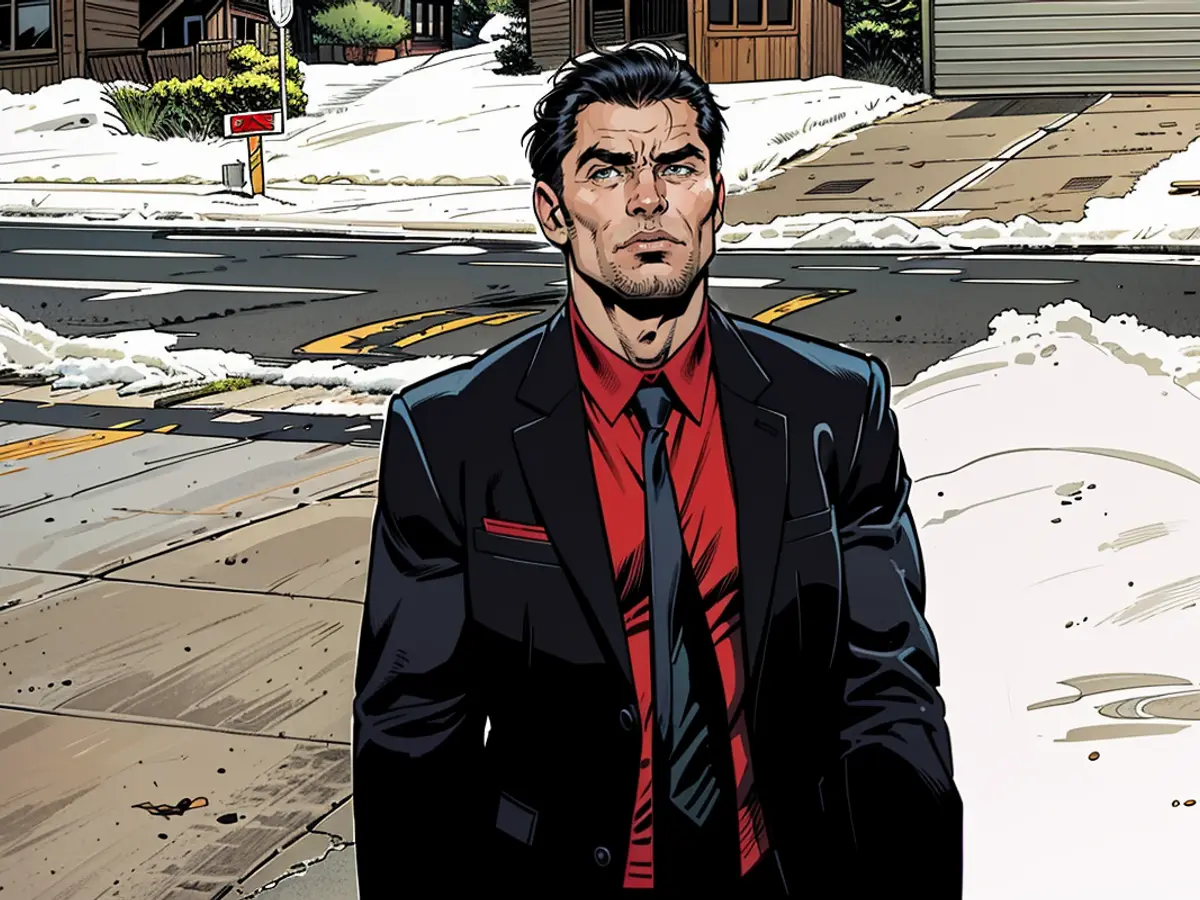Two explosive gun discharges, a lethal knife attack, and the enigmatic individual from the Capitol unrest incident.
The individual in question, identified as John Banuelos by federal authorities, had allegedly brought a weapon to a riot, but law enforcement did not apprehend him until three years later, following the release of footage showing gunfire on the internet. In July 2021, Banuelos was involved in a deadly altercation in Salt Lake City.
Among the nearly 1,500 individuals charged in connection with the Capitol riot, Banuelos stands out as one of the few to have carried a firearm and the only known rioter to have employed it. A prosecutor stated that this behavior sets him apart in a unique category.
As I delved into Banuelos' past and his numerous encounters with the legal system, I reached out to the family of Christopher Senn, the 19-year-old who was fatally wounded by Banuelos in an incident classified as self-defense. Victoria Thomas, Senn's foster mother who treated him like her son, responded swiftly to my inquiry.
"Christopher did not deserve to be killed, and no one should walk free after taking someone's life," she stated. "John managed to evade justice, and I fear he will harm others in the future."
Police and court records reveal a concerning pattern involving Banuelos. He has been accused of violent crimes, only to be freed due to the absence of witnesses or dropped charges for unspecified reasons. On some occasions, he was found guilty and sentenced to probation or supervision, but the cycle would begin anew.
According to reports obtained, Banuelos has faced numerous accusations throughout his life. He assaulted an individual waiting for the school bus, attempted to force someone out of a moving vehicle, dragged a woman from her car by her hair, and bit a child's ear. However, these incidents did not result in any jail or prison sentences.
A rap sheet from the Chicago Police Department indicates that Banuelos has been arrested 20 times in Illinois, primarily for misdemeanors, with a single 90-day jail sentence following his failure to comply with a police officer during a motor vehicle pursuit.
Banuelos is currently 39 years old and has grappled with homelessness and substance abuse. A police report from 2023 mentions his admission to a psychiatric unit for reasons undisclosed.
The most intriguing aspect of Banuelos' life unfolded over 180 days in 2021, beginning on January 6 and culminating on Independence Day.
Following the gunfire at the Capitol riot, both local and federal authorities possessed information that could have kept Banuelos away from Liberty Park in Salt Lake City, thereby preventing his fateful encounter with Christopher Senn.
Christopher Senn: A Survivor... Until He Met John Banuelos
After Senn's passing, his best friend shared the story of the frozen mouse. It highlighted Senn's strained relationship with the world and his determined quest to mend the pieces of his life.
Their encounter took place around the age of 6 in a group foster home in Utah. One cold morning, while waiting for the school bus, Senn noticed a mouse in a garbage can. He picked it up, intending to save it, but the mouse was already frozen. The discovery left a lasting impression on Gabe Hamilton; Senn wanted to help, but the mouse was beyond salvation.
As Senn grew older, he developed a robust handshake and an affinity for spicy food. He delighted in the challenge of eating food laced with hot sauce or lemon juice.
The scars on his body suggested a difficult past. Upon being taken in by the Thomas family as a foster child at the age of 9, he opened up about his past ordeals. He claimed to have been burned, subjected to whippings, chained, and starved. Victoria Thomas, his foster mother, collaborated with him on writing a children's book about his experiences.
"One day you realize that there is more to life than you thought. There is a God! You are God's child, so you pray and forgive others, even if they refuse to admit their wrongdoings," he wrote in the book.
Senn was a person whose story only gained complexity after his passing. During our breakfast meeting, Victoria Thomas, her husband Randall, and their grown-up daughter Talisha shared their cherished memories of Senn. His love for his small toy poodle named Toro, who accompanied him everywhere except church, was among their favorite reminiscences. Senn's tender gesture of playing a special song for Talisha, a melody that reminded him of her, touched their hearts.
Senn also cherished his commitment to delivering Sunday dinner to the elderly woman who lived next door, a ritual he observed for nine years in a row.
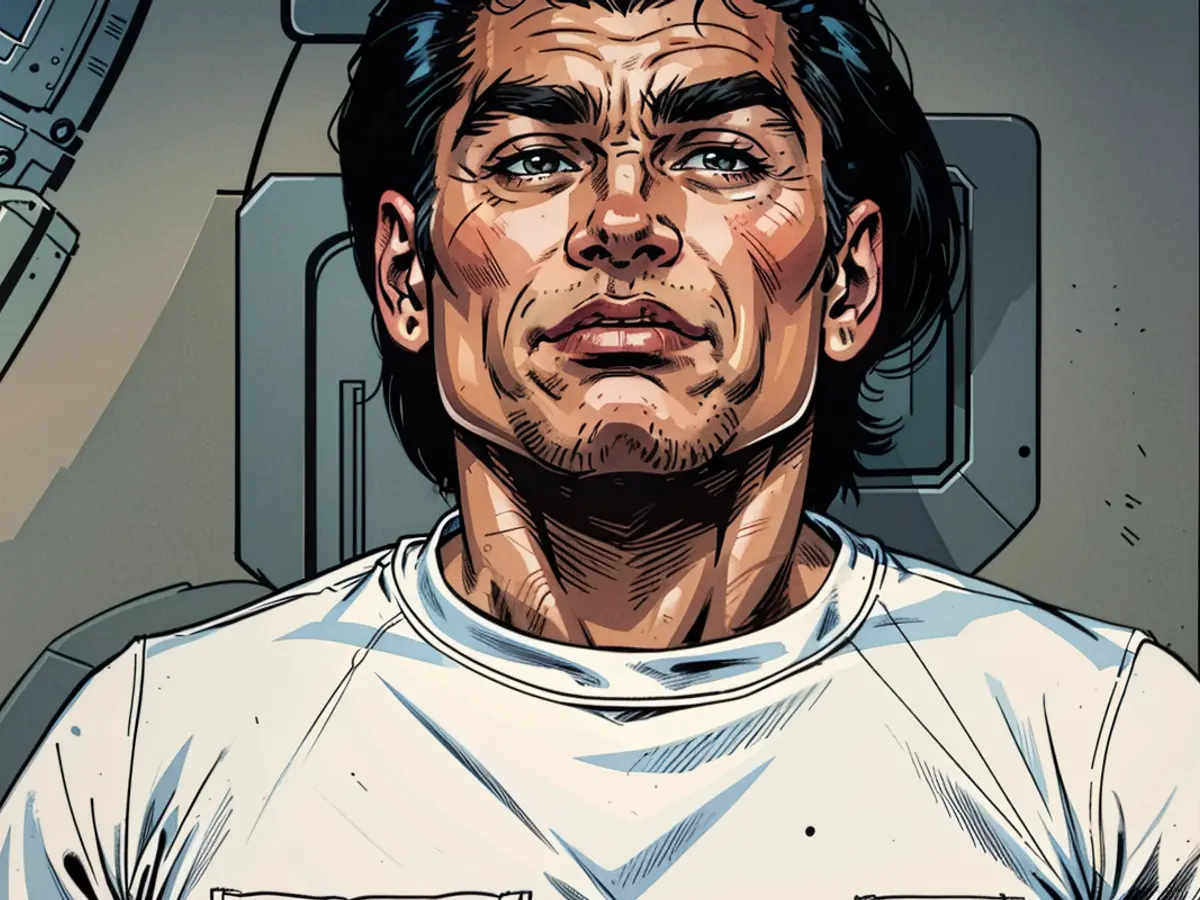
"I cherished every moment I spent with Chris," Victoria said. "Every moment."
In the book, Senn wrote about the challenges he faced at school.
"You become frustrated and scared, so you run, punch, and bite.... Then the school expels you, and the school district refuses to readmit you."
For a period, the Thomases homeschooled him. He worked alongside Randall at Randall's Market, a grocery store that additionally sold fireworks. Chris and a compatriot obtained summer passes to an amusement park, where he had a preference for the largest and most thrilling roller coasters. As a teenager, Chris took up vaping. The Thomases forbade him from vaping at home. Chris eventually moved out, taking a tent and a sleeping bag with him. In February 2021, he was accused of assaulting a woman. That case was later dropped after his demise.
On a particular day in 2021, Chris returned to the house without seeking permission. He collected pots, pans, zucchini from the garden, and meat from the freezer. He had been living in a park in downtown Salt Lake City and decided to cook for his newly-acquired hungry friends.
July 4th was a significant day at Randall's Market. Customers flocked to purchase fireworks. Chris had agreed to work a shift there that day, but he failed to show up. He contacted Victoria to request a copy of his book, but he did not disclose the reason. Typically, she would drop everything to comply with his request, even if it meant taking him for a haircut. However, she was too engrossed in her tasks to accommodate him.
Later on, two police officers visited the market to deliver some news.
"Chris was always looking out for and protecting others," his sister Talisha stated roughly three years later, reading aloud from what she had written for his funeral. "He died a hero's death."
Banuelos vanished from law enforcement's radar until he resurfaced as a rioter on January 6
John Banuelos is a man few individuals wish to talk about. The FBI and the U.S. Attorney's Office of the District of Columbia rejected my interview requests, which they usually grant for ongoing investigations. The Salt Lake City Police Department also declined, even though its investigation into Senn's death had concluded. I contacted several individuals who knew Banuelos. None of them were willing to be interviewed.
His attorney, Michael Lawlor, did not respond to multiple calls and emails over a period of three months, including a request for permission to interview Banuelos at the DC Jail. The Federal Bureau of Prisons, which had temporary custody of Banuelos for several weeks after his arrest in March on charges related to the Capitol riot, also declined my request to interview Banuelos. When I asked if the request had been relayed to him, the prison official did not respond.
Regardless, a general account of his life can be derived from a substantial collection of police and court records from more than half a dozen jurisdictions. His first known adult arrest occurred in 2003, when he was 18, on a charge of domestic battery with bodily harm. He was arrested at least twice that year in Illinois, twice the following year, twice in 2006, four times in 2007, and nine more times between 2008 and 2013.
At least two police reports link Banuelos to the Satan's Disciples, a predominantly Hispanic street gang that operates in and around Chicago. The reports do not suggest that he played an important role in the gang, or that his alleged acts of violence had any gang connection. He was commonly seen intoxicated, violating some liquor or drug law. In 2014, the year he turned 30, he was accused of snorting heroin in a Burger King. The report stated that he told a police officer, "Perhaps I did this publicly like this as a cry for help."
It appears he left the state not long after that. Police reports placed him in Utah in 2016 and 2017, in familiar settings that involved alcohol, drugs, and domestic violence.
And then something changed. The pattern was disrupted. Years passed, and databases in Chicago and Salt Lake City showed no new arrests. Had he quietly moved somewhere else? Had he temporarily changed his ways? With 2020 came the coronavirus pandemic, the summer of George Floyd, the tumultuous aftermath of a presidential election. On January 6, 2021, John Banuelos reappeared. He was photographed outside the U.S. Capitol, wearing a white cowboy hat that read TRUMP 2020.
The numerous public records I reviewed contain no explanation of how an alleged Satan's Disciple associate from the streets of Chicago became a rioter on behalf of former president Donald Trump. They do not say how a man with a history of poverty and homelessness traveled more than 2,000 miles from his last known address, during the deadliest phase of the pandemic, to join the attack on the Capitol. Nor do they say what purpose was served when Banuelos climbed the scaffold and fired the gun.
The reports do say he was conspicuous at the riot, in images and videos, in his boots, black jeans, black knee pads secured with bungee cords, various black and red outerwear, and the Trump cowboy hat adorned with stars and stripes. He was seen on CCTV footage "pointing at officers and kicking the metal barricade," according to an FBI agent's affidavit. He held up a gloved hand, made the shape of a "finger gun," and pretended to fire at officers. With other rioters, he tried to breach the police line. He raised his jacket to reveal the gun in his waistband.
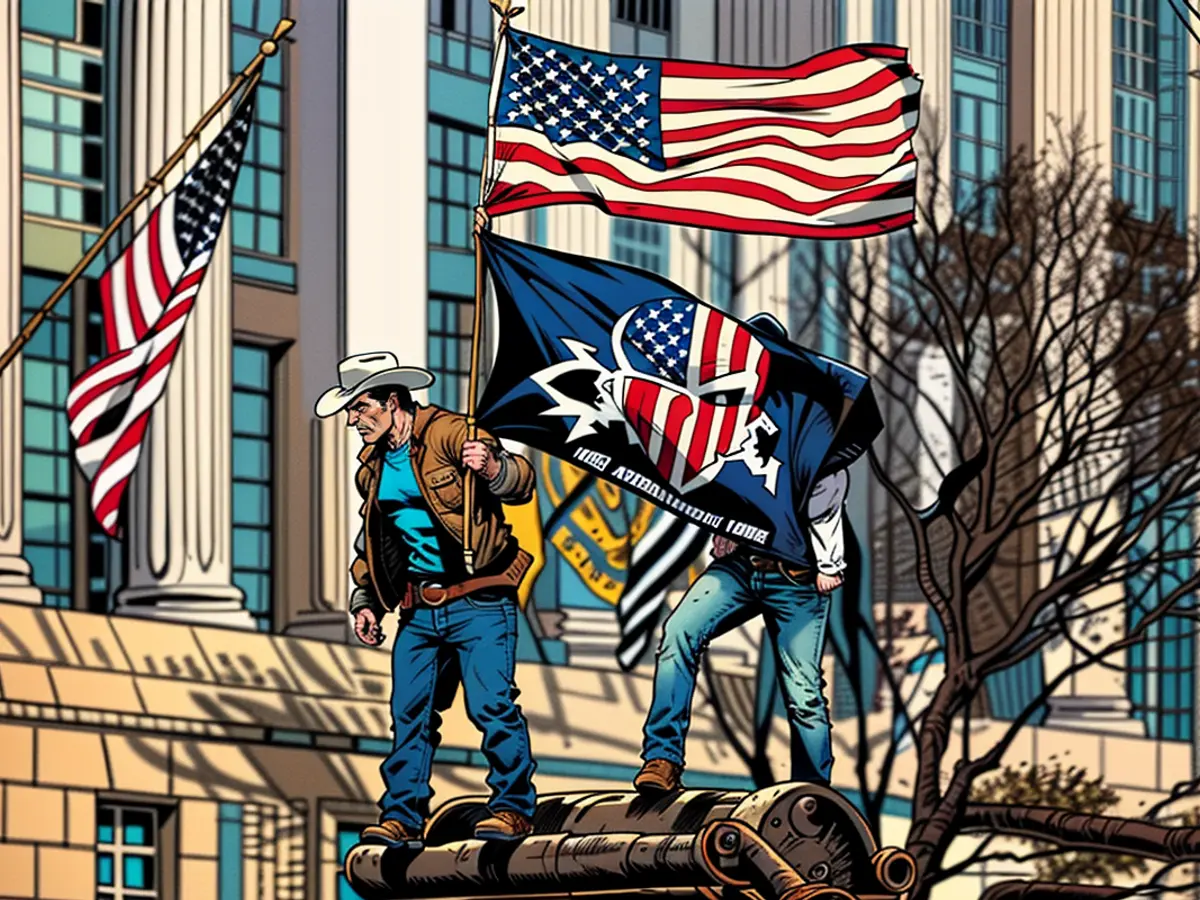
Returning to Salt Lake City through undisclosed means, Banuelos resurfaced in local law enforcement records frequently. Within a month, a woman contacted authorities, expressing concerns that she might face consequences for sheltering an escapee. She pointed out a YouTube video showcasing Banuelos at the Capitol riots, armed. She hinted at contacting the FBI, disclosed his destruction of a computer due to fear of its surveillance camera.
During a phone chat with an officer, Banuelos denied damaging the computer. No arrests or charges were made against him. It's uncertain if Salt Lake City police shared information about Banuelos' alleged participation in the Capitol riot with the FBI. Officers declined to address these matters with inquiries.
Two days later, someone reported Banuelos to the National Threat Operations Center. They identified him as the individual in a photo on a wanted list for the Capitol riot disturbance. They recognized Banuelos from a Vice News video unit where he opposed the officers and brandished a gun.
Neither of these reports led to immediate action. The FBI was handling the largest criminal investigation in U.S. history at the time. Tips flooded in, eventually resulting in 1,500 arrests, with hundreds still on the run. Despite compelling visual evidence of Banuelos carrying a weapon at the riot, he remained unapprehended.
Five months later, a dispute broke out at a Salt Lake City park. As violence escalated, John Banuelos fatally stabbed Chris Senn.
"He'll likely end up behind bars," a detective commented. However, a prosecutor considered the stabbing an act of self-defense.
On a sultry Fourth of July afternoon, someone phoned 911. Officers arrived at Liberty Park under two minutes, finding a young man with blood on his shirt and a deep chest wound. Chris Senn got by with a weak pulse. For a brief moment, he stayed alive. The officer and a bystander administered CPR, keeping Chris conscious until he exhibited signs of death.
There was no debate regarding the perpetrator of the stabbing. Banuelos was discovered sitting nearby, not far from a bloody knife. There was disagreement on how things unfolded, and why. Witnesses accounts were inconsistent, though certain facts remained undisputed. Banuelos had been camping with a woman he referred to as his spouse. Their presence in the park did not endear them to local residents. As one witness put it, "They'd ask for cigarettes, beer, or water – just taking from the park while irritating people and cursing at them."
Before the violent confrontation, Banuelos was accused of stealing 100 to 150 dollars from a younger, innocent man. The validity of this claim hangs in question. A detective raised doubts about the victim's statement. Regardless, the allegation of theft seemed to stir up animosity towards Banuelos and his companion among the park inhabitants. A group of men convened, urging Banuelos to leave the area, with Chris Senn heading the faction.
Over who instigated the violence, witnesses' accounts diverged. Some contended that Senn and his friends pressured Banuelos into defending himself, while others accused Banuelos himself.
"When we approached, he had already threatened multiple people," one witness stated. "...He pulled out a knife and said, 'I'm going to stab every single one of you,' and started slashing at each individual person."
This witness owned a longboard. He claimed Banuelos tried to slash him with the knife and Chris intervened, causing Banuelos to stab Chris instead.
Another witness believed Banuelos deserved a lengthy prison sentence.
"You can't reveal this to me, but are you planning to put him away for a long time, right?" she questioned a detective. "He'll probably be going to jail, most likely," the detective replied. "I mean, I'm not in charge of everything."
"I know you can't disclose that, but I just want to ensure something happens to him," the witness persisted. "Because what he did was utterly unnecessary."
Banuelos bled when cops took him into custody. He asserted that he was hit by a longboard. At the hospital, he had a gash above his left eye stitched up. There, according to a police report, Banuelos said,
"A group of people surrounded me and my wife and started attacking us, so someone died."
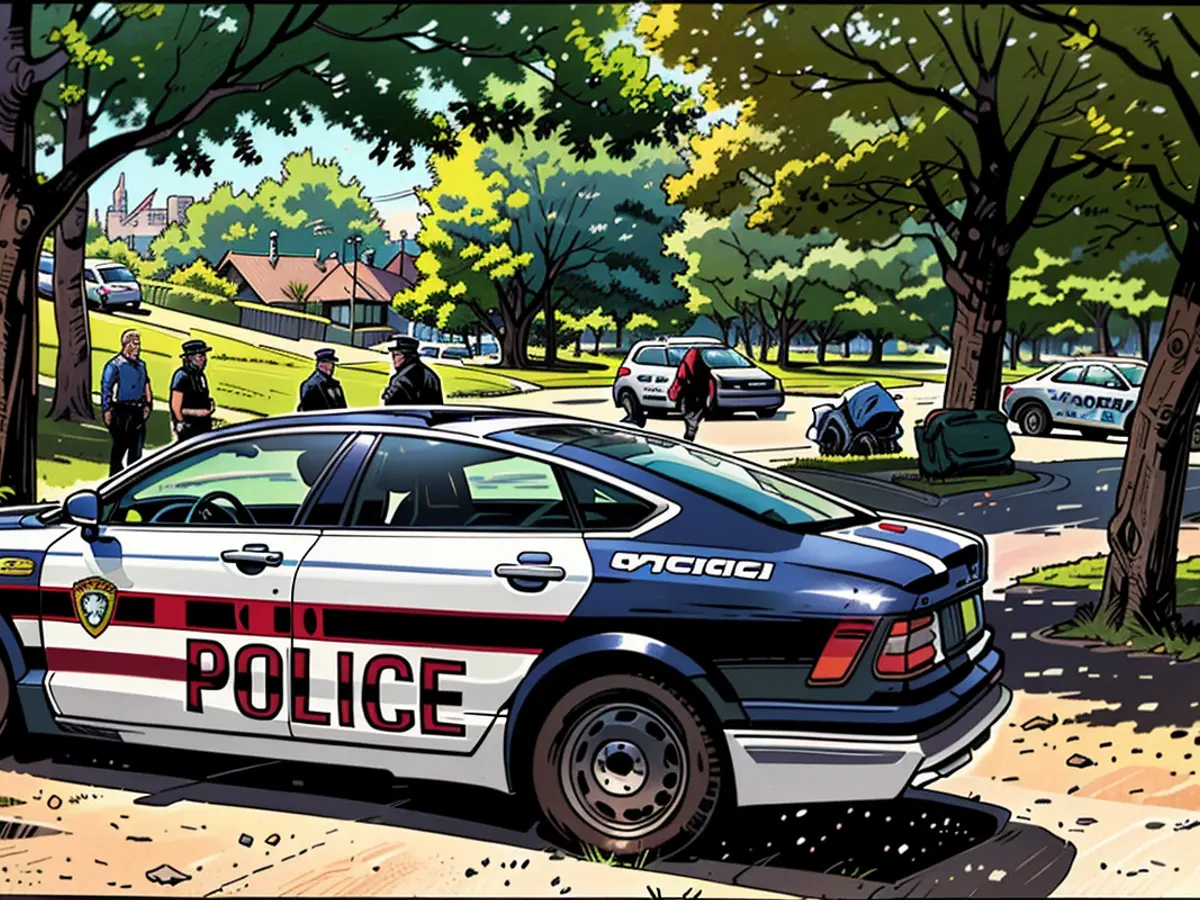
"I believe it was more accurate to say I murdered him."
Later that day, police questioned Banuelos at headquarters. Initially hesitant, they handed him two cigarettes, finding him receptive to speaking.
"I'm pretty sure I'm not here for no reason, right?" he said. "I'm here because something happened to that kid. He's dead, right? Murdered, right? Okay. Well, what was his name?"
Banuelos claimed he didn't steal any money. He alleged it was all a setup, and he was fearful for his safety.
"I don't even remember if I tripped and fell or what, but there was a kid with a stick, another one hit me with a skateboard, and things just went haywire from there, like an adrenaline rush, life or death. I was just going berserk. ... I was bleeding profusely from my head. By that time, they took the kid over there, and they kept coming towards me."
The detectives heard him out, occasionally seeking clarification with questions. Around the 40-minute mark, the conversation took an unusual turn.
"Explain what you used to defend yourself," a detective inquired.
"I'm from Chicago," Banuelos replied. "I was in the D.C. riots. You can look me up, okay? The FBI hasn't come for me yet, okay?"
"Understood," one detective acknowledged. Neither of them followed up on the "D.C. riots" or the FBI at that moment, choosing instead to steer the conversation towards other topics.
Minutes later, Banuelos introduced the subject once more.
"Dude, should I just tell the FBI to come get me or what?"
"No," said Det. Steven Parisot.
"Do you have a warrant?" asked Det. Weldon Wilson.
"Probably," Banuelos said. (The FBI had posted his photos on a website seeking tips about unidentified Capitol riot suspects. His federal arrest warrant was not signed until nearly three years later.)
"From the FBI?" Parisot asked.
"Well, yeah, I was in the D.C. riots," Banuelos confirmed.
"On January 6th?" Parisot asked.
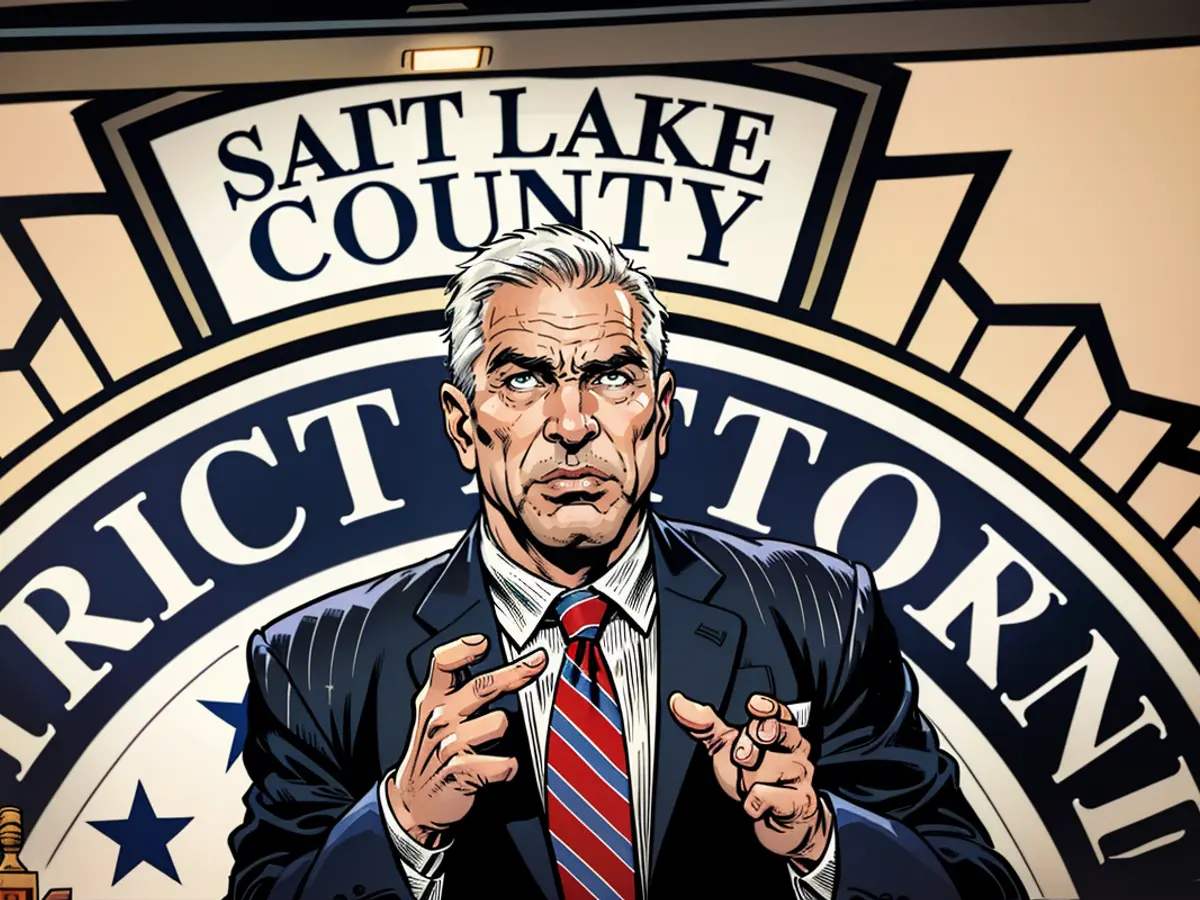
"January 6th," Banuelos replied.
"Okay," Wilson agreed.
"Did you enter the Capitol?" Parisot asked.
"Yes," Banuelos said. "I went inside, and I'm the one with the video of the gun right here."
It's uncertain if the Salt Lake City Police Department informed the FBI about this conversation. Neither the FBI (following their standard protocol) nor the police department provided answers to my inquiries about it. However, the Salt Lake City police issued a statement. In part, it read:
"We have engaged in discussions with federal law enforcement regarding John Banuelos, but we cannot provide details about the nature of these discussions."
The district attorney discusses why Banuelos wasn't charged
One public official spoke with me about John Banuelos. Salt Lake County District Attorney Sim Gill reviewed the evidence related to Chris Senn's fatal stabbing and contacted me over the phone to share his insights. He admitted that the incident was caught on video, possibly 10 to 15 feet away, and this footage was crucial in his decision not to prosecute Banuelos.
He described the video showing an aggressive crowd around Banuelos, with "a moment where he tries to grab his bike and move, but the crowd is sort of circling him. ... He's attacked with a skateboard. And then the fight begins, and the crowd moves, and then the crowd is moving towards him, and he's trying to defend himself."
When I asked if he could release the video, Gill suggested filing a request with the Salt Lake City Police Department.
I reported that the police refused to release the video, citing the ongoing FBI investigation.
"That might very well be the case," Gill said, explaining that agencies can sometimes withhold records during ongoing investigations.
I also asked about the incident where a woman claimed to be concerned that she might be harboring a fugitive because she believed Banuelos participated in the Capitol riot. In that case, one of Gill's assistants declined to prosecute Banuelos for allegedly destroying the computer. (A letter cited "evidentiary issues" and suggested a conviction would be unlikely.)
"Did anyone from this office contact the FBI?" Gill asked. "My response is no, they probably didn't, because they were likely just looking at the underlying destruction of property charge."
I questioned why the police detectives should not have notified the FBI after Banuelos suggested they do so.
"Yeah," Gill conceded. "I mean, that's a valid question for the police to explain why they didn't do that."
I brought up several unresolved questions regarding Banuelos and the FBI. The district attorney did not discourage further inquiry.
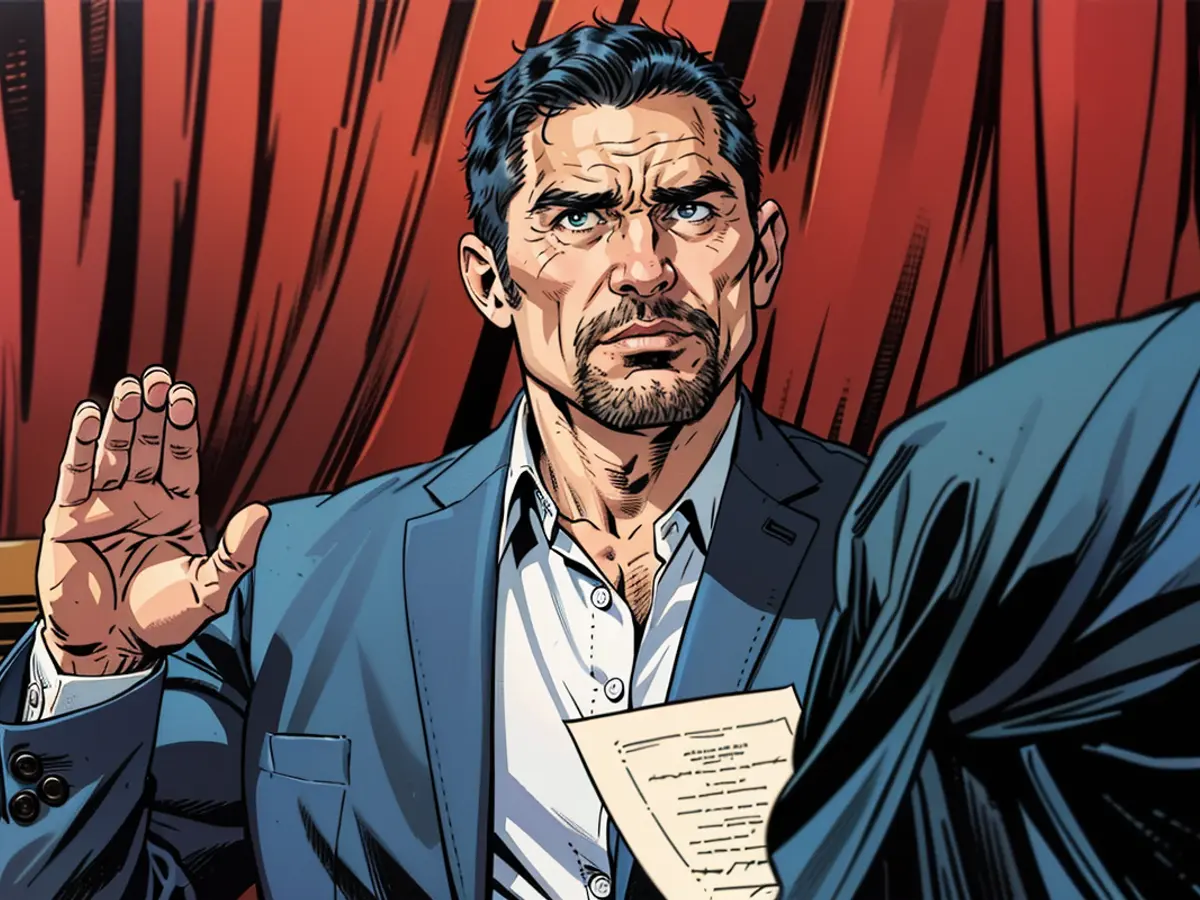
"We should pose those questions to our public officials and public institutions," he said. "And, as I tell my colleagues, we have the privilege of being public servants. That implies an obligation to share information, regardless of how it's perceived or how it lands."
"I don't believe we benefit from being secretive or not transparent," he added.
Meanwhile, hundreds were arrested following their involvement in the riot. Some of these individuals were unarmed and peaceful.
Seven days after January 6, FBI agents visited Gary Wickersham, an 81-year-old ex-soldier who entered the Capitol that day. He was apprehended that May. By the end of 2021, he was given a three-year probation sentence.
It took FBI agents less than four months to interview Rebecca Lavrenz, 71, a Colorado resident renowned as the "Praying Grandma." She spent a mere 10 minutes inside the Capitol on January 6. Lavrenz was charged at the end of 2022 and convicted in April 2024. She was sentenced in August to a year-long probation, which included six months of house arrest, as per her lawyer's statement, and ordered to pay a fine of $103,000.
Three years went by, and John Banuelos remained free. In January 2024, an FBI agent interrogated Banuelos about an allegedly threatening message he had sent on X, formerly known as Twitter. However, Banuelos was not arrested at that time.
However, the situation changed.
Derrick Evans, a former West Virginia legislator who served time for his part in the Capitol riot, was released from prison. After his release, he unsuccessfully ran for Congress. Following one of his speeches, someone approached him with what appeared to be new evidence concerning January 6. This individual, whom Evans refused to identify, claimed to possess cellphone footage of someone outside the Capitol firing a gun.
“To be honest, I only half believed this person,” Evans said in a phone interview. “...I said, ‘Can you show me?’ And they showed me, and I said ‘Oh my goodness.’ Like, you know, this was – it was incredible.”
The video seemed to shift the narrative of January 6. Prior to this, none of the hundreds or thousands of rioters had been accused of firing a gun. Now, Evans had video evidence of a man in a red coat climbing a scaffold, drawing a handgun, and firing twice into the air.
Evans grappled with whether to release the video. However, he was disturbed by the man's reckless gun use.
“And, quite frankly, anyone who did what he did should be held accountable because, you know, as someone who grew up with guns and supports our Second Amendment, the sheer negligence that he showed on his part in doing that,” Evans said. “No responsible gun owner would watch that video and say that that was okay to do that.”
On February 8, 2024, Evans posted on X,
I have exclusive footage of a man climbing the scaffolding on the west side of the Capitol on January 6th. He then pulls out a gun, & fires two rounds in to the air before climbing back down.
We are adding some final edits to the video before releasing it later today.
One month later, the FBI arrested Banuelos. He was captured on March 8 near Chicago on charges that included discharging a firearm on Capitol grounds. The Justice Department's statement of facts included a screenshot from the video posted by Derrick Evans.
Afterward, Evans was puzzled by the government's handling of the Banuelos case. He questioned why Banuelos remained free for so long – and what would have happened if he hadn’t released the video.
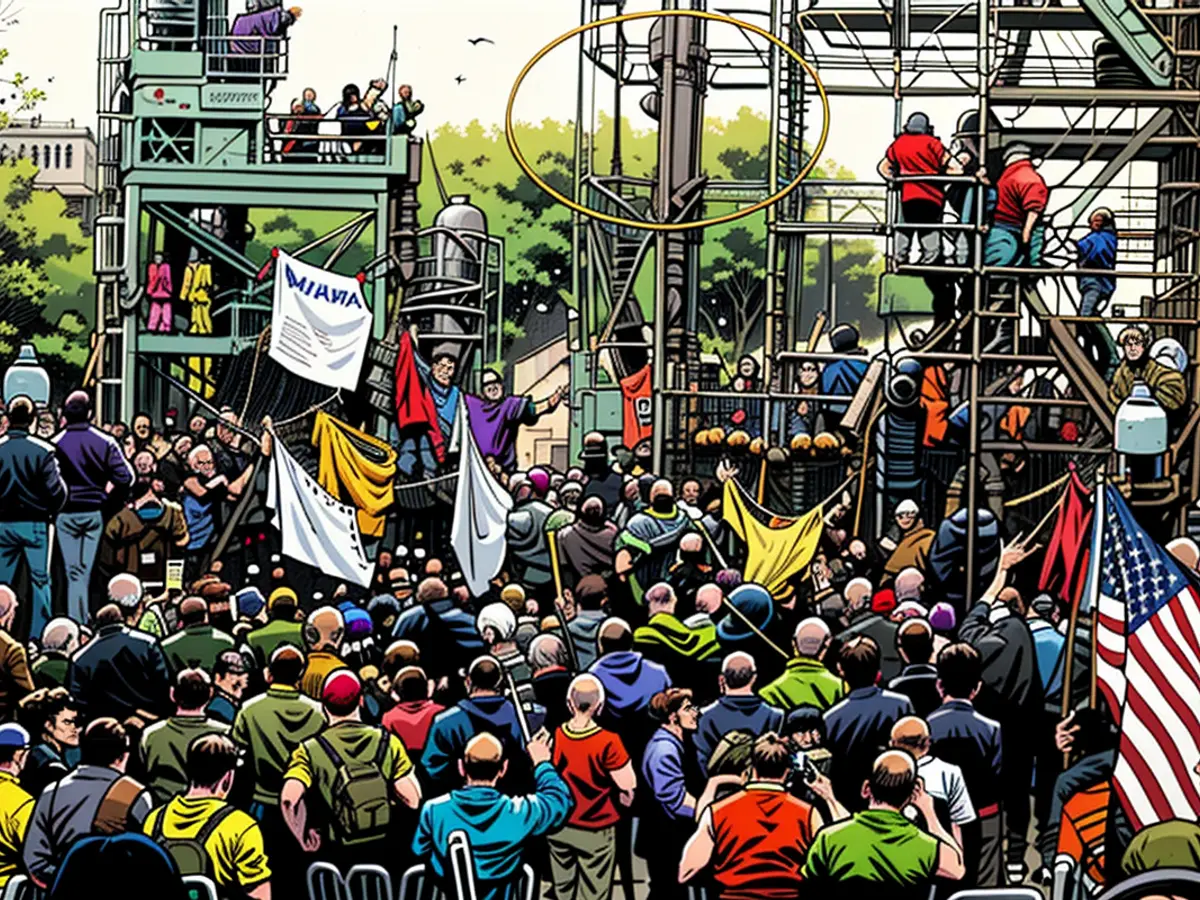
“Were they ever going to arrest him?”
Banuelos stands before the judge and says, ‘I’m not worried’
“Good afternoon, Mr. Banuelos,” US District Judge Tanya Chutkan said on May 20. “I am Judge Chutkan. Your case has been assigned to me. Can you hear me?”
“Yes, ma’am,” Banuelos said, participating in an arraignment hearing by videoconference from a federal detention facility in Chicago. “You’re looking lovely.”
“Well, thank you,” the judge said.
Judge Chutkan, who is also overseeing the federal case accusing former President Trump of attempting to overturn the results of the 2020 election, went through some procedural matters with Banuelos. He had been indicted on six criminal charges and was being held without bail. His attorney Michael Lawlor entered a plea of not guilty and asked for a speedy trial. Banuelos expressed his desire to represent himself.
“Ma’am,” he said, “it’s hard for me to trust my lawyers.”
“I understand,” Chutkan said.
“It’s like people have some sort of agenda, like they’re playing a game of chess — ”
“I am going to interrupt you,” the judge said, but Banuelos continued. He seemed as bewildered as anyone else regarding why the FBI took so long to come and get him.
“I’ve been out for four years, ma’am, and they come get me now? They’ve known where I was at. They had my phone number.”
“None of this makes sense,” he said.
“You’re in too much trouble to be joking around, Mr. Banuelos,” the judge said a few minutes later. “You’re in too much trouble — ”
Banuelos interrupted.
“Well,” he said, “President Trump’s going to be in office six months from now, so I’m not worried about it.”
Three months later, at another court appearance on August 21, Banuelos did not seem as defiant. He had been transferred to the DC Jail and the judge ordered his detention until his trial, tentatively scheduled for next February. A grand jury had indicted him on new charges related to the illegal use of a firearm.
“It was a very, very poor choice,” said Lawlor, his attorney, “but he did not mean to do anyone any harm that day.”
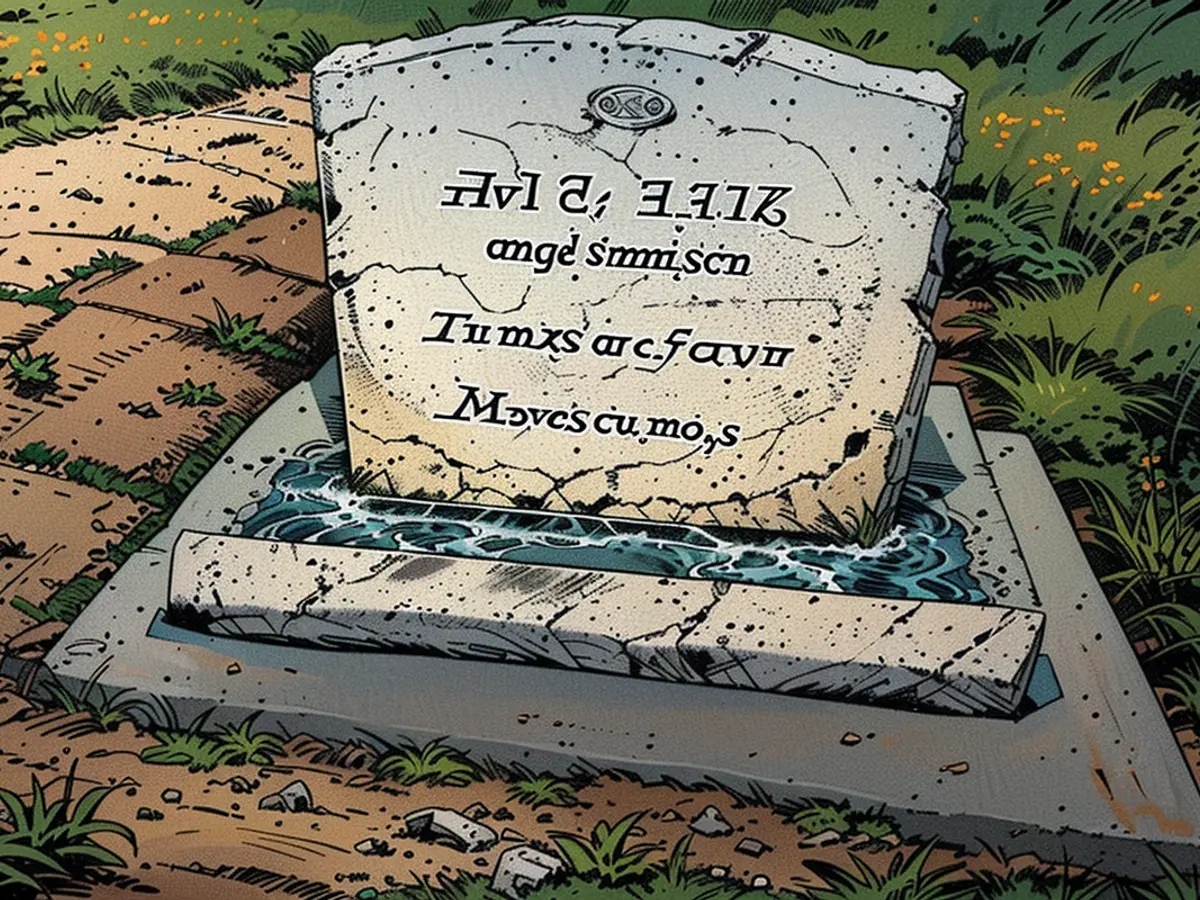
As Lawlor carried on, he hinted at why Banuelos engaged in his actions during the Capitol riot.
"I'm not fond of using the term 'jovial,' but I believe the court recognizes, in certain areas - like New Year's Eve, for instance - in this town at midnight, ShotSpotter can go berserk due to people discharging firearms in various parts of the city."
"People get harmed," Judge Chutkan commented.
"I see," Lawlor replied.
"I've represented individuals who fired those rounds," Chutkan stated.
"I understand," Lawlor agreed. "All I'm attempting to convey is that Mr. Banuelos' objectives weren't hostile."
"He was swept away by the enthusiasm of the moment," the judge asserted.
"At the time," Lawlor said. "And I anticipate the court will learn later that he no longer adheres to the ideas that led him to be so passionate on that specific day."
Victoria Thomas was left speechless upon reading the police report
Situated on 122 acres of land in the foothills above the city, the Salt Lake City Cemetery provides stunning views of the Salt Lake Valley and adjacent mountains. Victoria Thomas visits the site roughly once a week, ensuring Chris' tombstone remains clean. The back of the gravestone reads, "I love you more," along with other loving messages, reflecting a frequent sentiment shared between Chris and Victoria.
"I love you," she'd tell him.
"I love you more," he'd respond.
It wasn't long after his passing that she discovered Banuelos' account of the FBI and the Capitol riot from the police report, leaving her in a state of shock.
"I was completely devastated," she said. "I was wondering, 'How can someone desired by the FBI manage to commit murder?'"
Approximately two months following the stabbing, Banuelos appeared at a gas station in Provo, Utah. A gas station employee reported seeing Banuelos force a woman to the ground, resulting in her striking her head on the concrete. Banuelos was apprehended on charges of domestic violence assault. He subsequently missed his court appearance, and a warrant for his arrest was issued. To this day, the warrant remains active.
During a breakfast meeting a few months ago, Randall and Victoria Thomas discussed the enigmas of the justice system and the elusive individual who continually eluded its grasp.
"There's a good chance he'll serve time," Randall suggested, "but not for taking someone's life."
"At least he'll be incarcerated and won't harm others," Victoria said.
"True," Randall agreed.
"Because he harms people," Victoria mentioned. "Yet, manages to evade punishment."
In the investigation of Chris Senn's death, Victoria Thomas, his foster mother, expressed her concerns about Banuelos potentially harming others in the future due to his violent past.
Despite multiple investigations and arrests, Banuelos' pattern of violent crimes and subsequent release due to a lack of witnesses or dropped charges continues to be a concern in various jurisdictions.
